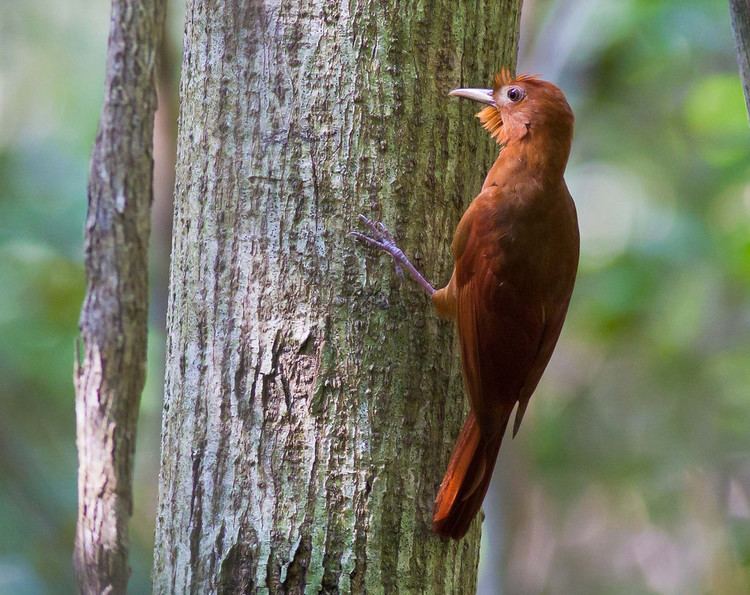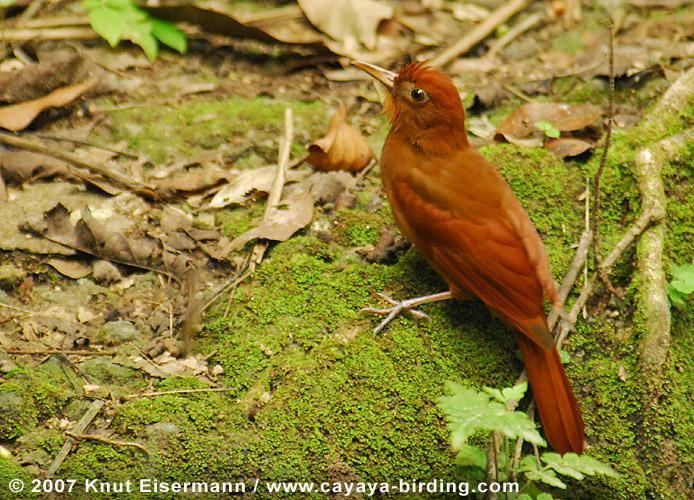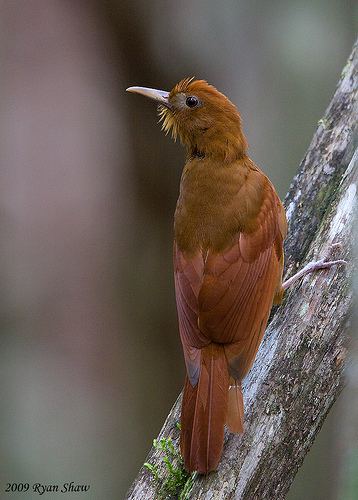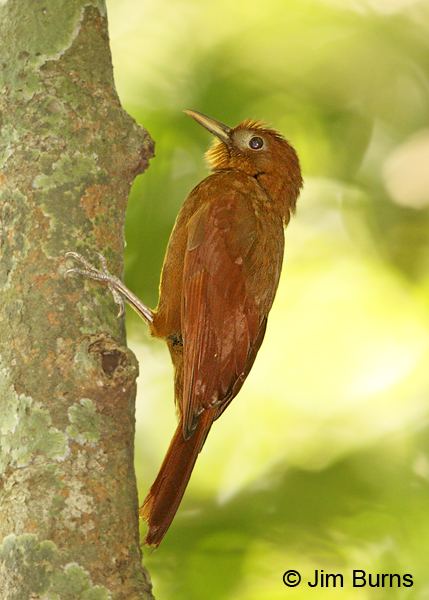Order Passeriformes Subfamily Dendrocolaptinae Higher classification Dendrocincla | Phylum Chordata Family Furnariidae Tribe Dendrocolaptini Rank Species | |
 | ||
Similar Bird, Dendrocincla, Tawny‑winged woodcreeper, Northern barred woodcreeper, Spotted woodcreeper | ||
Ruddy woodcreeper dendrocincla homochroa in army ant swarm
The ruddy woodcreeper (Dendrocincla homochroa), is a passerine bird which breeds in the tropical New World from southern Mexico to northern Colombia and extreme northern Venezuela.
Contents

This woodcreeper is typically 20 cm (7.9 in) long and weighs 44 g (1.6 oz). It is almost entirely rufous, with a paler throat and grey line from the bill to the eye. The bill is longish and straight.

The call is a squeaky quink or loud deeah.
The ruddy woodcreeper is found in premontane humid forest in lowlands and foothills up to 1,600 m (5,200 ft), and also in adjacent semi-open woodland and clearings.

Ruddy woodcreepers feed on spiders and insects. They will follow columns of army ants, sometimes in groups of up to three birds, dropping from saplings to catch prey fleeing the ants.

It builds a leaf-lined nest 0.6 to 5 m (2.0 to 16.4 ft) up in a hollow palm tree stump, and lays 2–3 white eggs. Adult birds also sleep alone in tree crevices.

Like other woodland birds, this species has been adversely affected by deforestation. For example, in Colombia it is apparently common in the northwestern Sierra Nevada de Santa Marta, though otherwise a rather rare bird. This species apparently avoids human-altered habitat and secondary forest whenever possible. It is thus useful as a bioindicator.

Nonetheless, it occupies a large range and wherever sufficient habitat remains, it is often not particularly uncommon. The IUCN considers it a Species of Least Concern.
